Uncover Carcassonne's vibrant flavors and culinary gems with our expert guides. Plan an unforgettable trip now!
Read more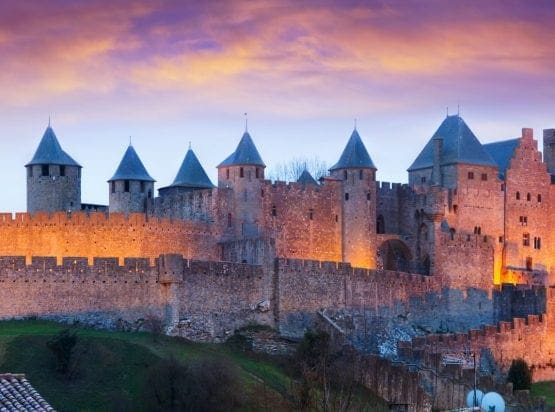
EXPLORE ALL OUR LANGUEDOC-ROUSSILLON WINE REGION GUIDE
Last updated: April 4, 2025
Few appellations in the Languedoc combine all the region’s charms so well as Corbières. Its position between the Mediterranean and the Pyrenean foothills makes it one of the most heterogeneous vineyards in southern France, with a multitude of microclimates, soil types, and aspects. Yet it also offers a veritable feast of familiar sights: garrigue-covered slopes, ancient farmsteads, hilltop villages, and winding streams.
In this timeless scene, growers produce red, white, and rosé wines that most clearly reflect their origins: sun-soaked, potent, and infused with the aromas of the scrubland. If you seek an authentic taste of the Languedoc, there is no better candidate than Corbières.
Discover More About French Wine
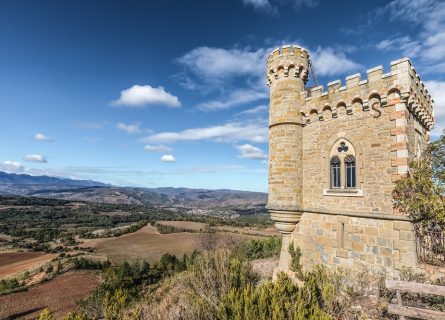
Today, the Languedoc is one of France’s most popular tourist destinations, seducing wine lovers and gastronomes with its vivid landscapes, beautiful towns, and superlative wines.
Yet its history is both turbulent and bloody: the rolling hills of southern Gaul (France) were an important crossroad in the ancient world, colonized by the Phoenicians and then Greeks in the 2nd century BC. Both civilizations planted vines in the rugged terrain of the Languedoc.
However, it was the Romans who truly popularized viticulture in Western Europe. The area flourished as part of the Pax Romana, with lucrative trading routes extending into all corners of the Western Roman Empire.
From Roman Dominance to Medieval Turmoil
However, following the collapse of Rome’s hegemony in the 5th century, Gaul entered a period of infighting between rival civilizations – including the Visigoths and Moors – and rival factions of the Frankish Carolingian and Merovingian dynasties. But the local inhabitants of Occitania were no pushovers – after years of fierce fighting, the Languedoc was awarded considerable regional autonomy by the Frankish overlords.
Meanwhile, viticulture became the almost exclusive domain of the Catholic Church, headquartered in abbeys and monasteries administered by Benedictine and Cistercian monks.
It is said that the first Holy Roman Emperor, Charlemagne, dispatched his sommelier to the vineyards of Corbières, where he promptly fell in love with these beautifully aromatic wines.
The Cathar Crusade and Its Aftermath
By the 13th century, the Languedoc had lost political independence; the Toulouse parliament set the agenda for the Midi from 1420 until the French Revolution of 1789.
During the Wars of Religion, many towns and cities offered safe haven to the persecuted Cathars, including Nimes and Carcassonne. The latter sheltered a group of Cathars in 1209, but after a two-week siege, the cathedral fell to the crusaders sent to eradicate them.
After that, the region became an isolated and destitute backwater – its revival occurred in the 1700s after the completion of the Canal du Midi. This landmark project directly linked the Mediterranean and the Atlantic (via Toulouse), and Corbières’ vignerons took advantage of this unprecedented opportunity.
Corbières and the Modern Languedoc Economy
In the 21st century, Corbières remains a vital part of the regional economy and is the fourth-largest appellation in France.
Corbières is one of the Languedoc’s most iconic and awe-inspiring regions: a topographical chaos of mountains and valleys that touches the Mediterranean and the border of Minvervois. Indeed, the area under vine is the largest expanse of vineyards in southern France, extending 60 kilometers from Port-la-Nouvelle back into the Aude departement and the eastern fringes of Carcassonne.
It encompasses the foothills of the Pyrenees, sparse, garrigue-covered plateaus, and the low-lying terrain that flanks the saltwater lagoons of Narbonne.
For that reason, the authorities decided to subdivide the appellation into 11 distinct zones in 1990, acknowledging the great diversity of terroir within this region.
Climatic Diversity and Its Impact on Wine
Some of Corbières’ greatest climats (vineyard sites), particularly in Hautes-Corbières and Durban, are located in the Pyrenean foothills southeast of Carcassonne. Sharing its privileged position with the neighboring vineyards of Fitou, the undulating terrain of the region rises to 500 meters above sea level in certain places, affording all the benefits of diurnal temperature variation; this difference between day and night time temperature helps to preserve acidity in the grapes, resulting in fresher wine.
The Influence of Mesoclimate on Wine Styles
Meanwhile, the vineyards of Sigean and Fontfroide enjoy a far warmer mesoclimate due to the lower elevation and proximity to the Mediterranean Sea. The local interpretation of red Corbières, besides in the most anomalous and cool vintages, is a very concentrated and alcoholic blend of Grenache, Carignan, and probably Mourvedre. Occasionally, rustic tannins can result from an excess of heat and over-extraction.
However, the best producers usually avoid this warm climate faux pas. Nevertheless, drought and summer fires are constant threats in the hottest parts of the appellation, and this has only become worse in recent years.
Boutenac: A Notable Sub-region within Corbières
In 2005, the village of Boutenac gained celebrity status in Corbières when it received a new, independent appellation. Located in the northeastern hills of the region, the zone earns wide admiration for its excellent terroirs and favorable mesoclimate.
Here, rosemary and thyme share the landscape with gnarly old bush vines planted on schist topsoils that give way to clay-limestone, sandstone, and infertile marls.
Some of the area’s most structured and precise red blends are made here, not least because of the intermittent influence of the Atlantic blowing down the Aude Valley and over its western hills.
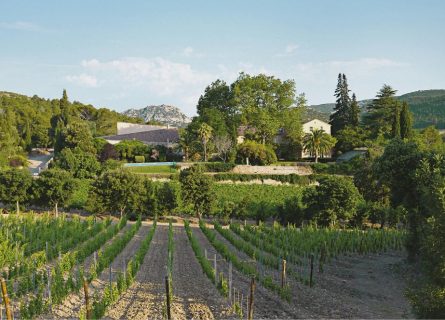
All red Corbières must contain a minimum of two grape varieties, most commonly a blend of Grenache with Syrah or Carignan. Yet many properties elect to use at least three to four different grapes in the fermenter, including Mourvèdre, Terret noir, and/or Cinsault.
Beyond these general principles, the wines of Corbières are as varied—and unpredictable—as those of any major appellation in the Languedoc.
Indeed, every winemaker has a different idea about the proportions of different grapes, the role of new oak, and the best type of fermentation vessel. Just as in the southern Rhone, Grenache, Syrah, and Carignan respond to the differing effects of climate and terroir – this only widens the possibilities in the cellar. Thus, it is impossible to generalize about the red wines of this sizable vineyard.
Carbonic Maceration of Carignan
However, there are one or two traditions that are largely maintained across the region. One involves the fermentation of Carignan using carbonic maceration; Château d’Aussières is one such estate in favor of this approach, as Carignan can yield tough and tannic wines if it is vinified in the normal manner. Instead, the berries are allowed to ferment spontaneously under a protective layer of CO2 – this kickstarts an independent, intracellular fermentation inside the grapes commonly used to make Beaujolais Nouveau.
Meanwhile, the weight of the bunches is sufficient to crush the fruit and release juice into the tank. The resulting wines tend to be soft and relatively light in color, so this method is ideal for ‘difficult’ grapes such as Carignan. After a short maceration, the free-run wine is removed from the vat, and the alcoholic fermentation is completed very quickly in a separate vessel.
The Importance of Temperature Control
Another point of consensus is the vital role that temperature control now plays in the cellars of Corbières. Fermentation vats were traditionally made of oak in the region, yet stainless steel has the advantage of being easier to cool and clean; high fermentation temperatures burn out the fruit flavors in the wine, albeit it encourages the extraction of color and tannin.
Nonetheless, a relatively cool vinification in steel tank is the favored course of action, producing fruit-forward and accessible wines that the market demands. Certain winemakers will use a percentage of new barrique in the fermentation process, while the best cuvées are almost always matured in wood. This adds texture, flavor, and structure to the wine – the duration (and percentage of new oak) is one of the most crucial decisions taken by the oenologist. Much will depend on the specific qualities of the blend, vintage, and desired result.
Expanding into Whites and Rosés
A small (but growing) volume of white and rosé is also made in Corbières, utilizing a broad palate of varieties that may include Bourboulenc, Grenache, Marsanne, Roussanne, and Picpoul. Much like Corbières rouge, these are aromatic, powerful wines driven by fruit and alcohol, with a noticeable lack of rusticity thanks to the advances of modern technology.
The best examples, enhanced with a touch of new oak, are vivid expressions of the Languedoc landscape: rich, herb-scented, and profound. A rival to the best Châteauneuf-du-Pape Blanc.
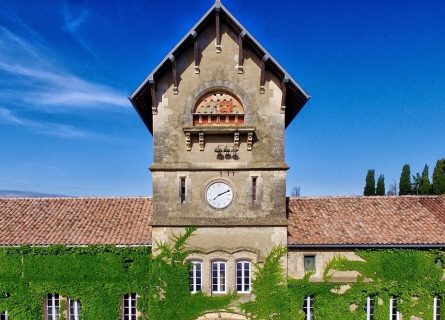
Few vineyards outside the southern Rhone Valley can produce such mesmerizing concoctions of Syrah, Grenache, and Mourvedre as Corbières. Thirty-five years ago, the appellation was associated with rustic tannins and burnt flavors – a poor man’s version of Gigondas.
Yet, in 2024, Corbières produces wines that routinely challenge the best of Minervois, Châteauneuf-du-Pape, and its close neighbor Fitou. So what has changed in that time?
Evolution in Viticultural Practices
A great deal of remarkable progress has occurred in the vineyard. But it isn’t simply a case of lower yields and more diligence: organic and biodynamic viticulture is transforming the output of the Languedoc as synthetic chemicals are increasingly replaced with holistic methods and sustainable farming.
Meanwhile, growers are becoming ever-more adept at matching the suitable variety to the ideal terroir; because of the diversity and size of the geographical area, it is impossible to assign a one-size-fits-all description of red Corbières.
However, the advantage is that producers can exploit a wider range of soils and mesoclimates than almost anywhere else in the Languedoc – soil studies and geological mapping are all the rage today.
The Impact of the Human Factor
But perhaps the single most important element is the human factor. Visitors are often amazed to learn that the appellation boasts over 2000 growers from tip to toe. Equally surprising is how well-equipped many of the smaller domaines are in 2024; vignerons are armed with modern fermentation vessels, new barrels, and quite possibly some concrete eggs.
Although climate change remains a constant worry, most of the region’s output is astonishingly fresh, balanced, and food-friendly.
After a few missteps, Corbières has become a thoroughly grown-up vineyard. It deserves our attention and respect.
Bourboulenc is a white wine grape variety grown mainly in Southern Rhône, Provence, and Languedoc in southern France.
Find out moreGrenache blanc is a white wine grape varietal popular in the Rhône, Châteauneuf-du-Pape and Languedoc-Roussillon regions of Southern France.
Find out moreDiscover Viura: Rioja's Prominent White Grape & Catalonia's Macabeo. Explore its versatility in exquisite wines. A must-read for wine enthusiasts.
Find out moreUncover the allure of Marsanne grape variety. From its traditional role in Rhône blends to the new wave of single-varietal Marsanne wines.
Find out moreLearn about Roussanne, the elegant white grape native to Rhône. Often blended with Marsanne, explore its unique qualities and rich heritage in our guide.
Find out morePicpoul Blanc is a white wine grape varietal grown primarily in the Rhone Valley and Languedoc-Roussillon regions of France.
Find out moreExplore the Renaissance of Sardinian Vermentino: From Forgotten Grape to Crisp Elegance. Discover Now!
Find out moreViognier comes from the northern Rhône valley AOC of Condrieu and is where its most famous white wines are produced.
Find out moreCarignan is a red grape variety that grows mostly in Southern France, and is often used as a blending grape
Find out moreCinsault is a red wine grape that is important in the Languedoc-Roussillon wine region of France because of its tolerance to high temperatures.
Find out moreDiscover grenache, a mediterranean grape that is dark-skinned red wine grape variety and an unlikely hero of a grape
Find out moreMourvèdre is a red wine grape variety of mysterious origin that's grown around the world, including the Rhone and Provence regions of France.
Find out moreSyrah is dark-skinned and perhaps the most underrated of the 'noble' red grape varieties.
Find out moreTerret noir is a dark-skinned grape variety from France's Rhône valley and a mutation of the ancient Terret vine. It's allowed in Châteauneuf-du-Pape blends and, like its relatives, Terret gris and Terret blanc, buds late and grows vigorously. The grape yields light-colored, tart, perfumed wines
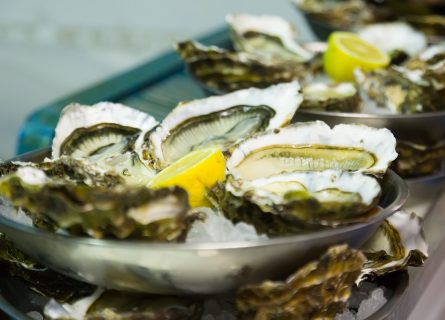
The isolated villages and towns of Corbières are surprisingly full of tempting places to eat, including a surfeit of family-run bistros where the best of local wines are married with fine food. The cuisine is often market-driven and likely to involve confit du canard, the ubiquitous cassoulet, fresh seafood, and delectable foie gras. Without a hint of pretension, the best of Corbières dining is an enjoyable experience indeed.
A Guide to the Gastronomy and Cuisine of Languedoc Roussillon: Read more

Uncover Carcassonne's vibrant flavors and culinary gems with our expert guides. Plan an unforgettable trip now!
Read moreIf you would like us to customize an exclusive luxury tour, contact us and let us know your travel plans. We offer luxury food and wine tours for private groups of a mininium two guests. In addition, all of our private, chauffeured tours are available year-round upon request.

